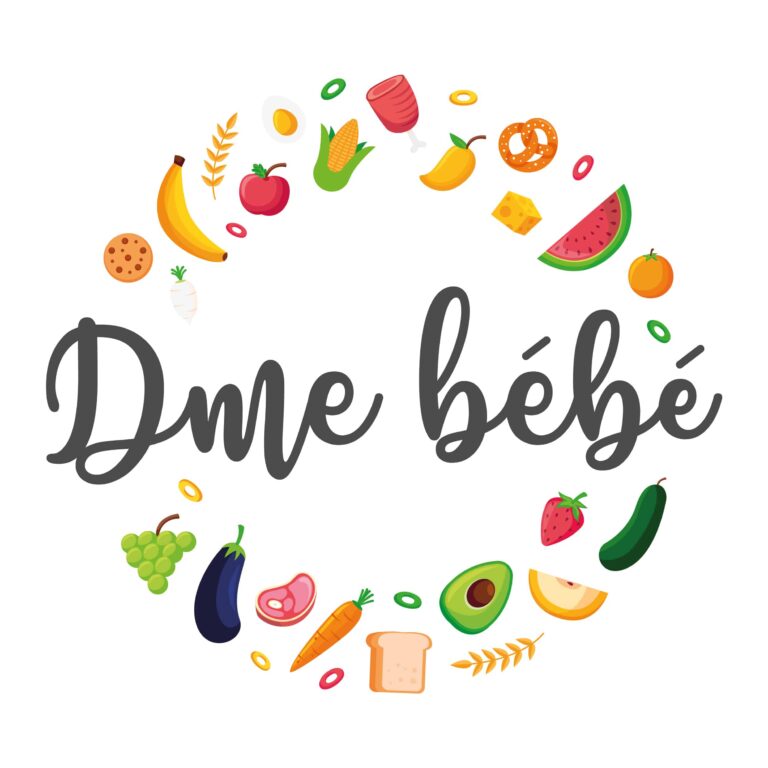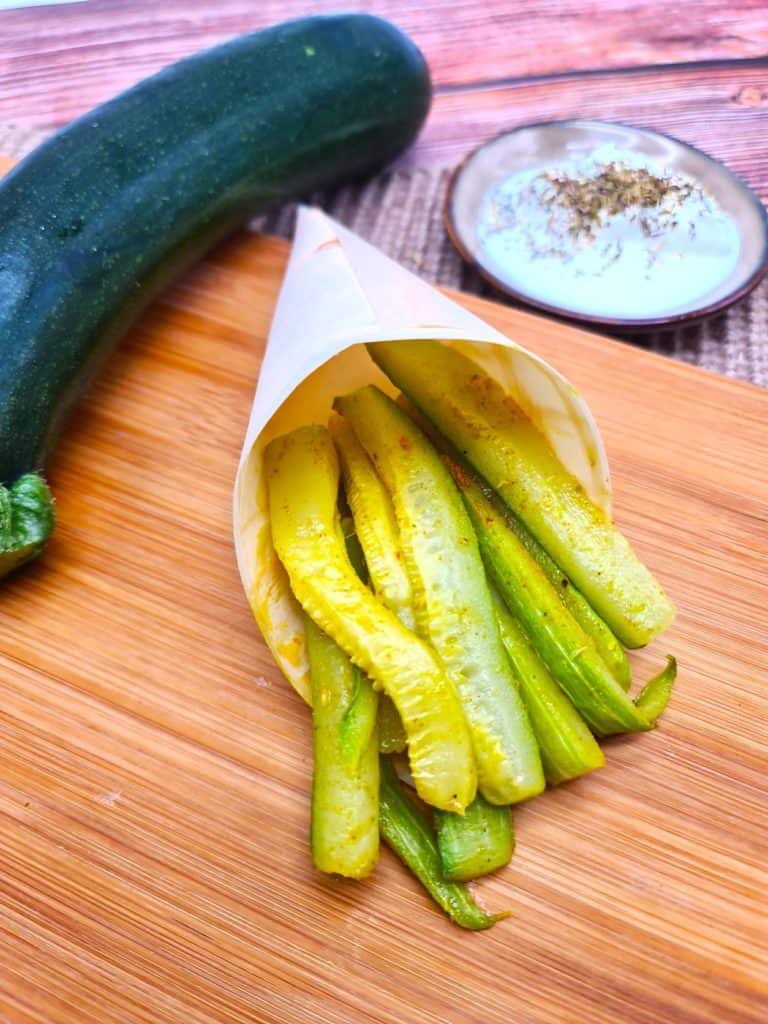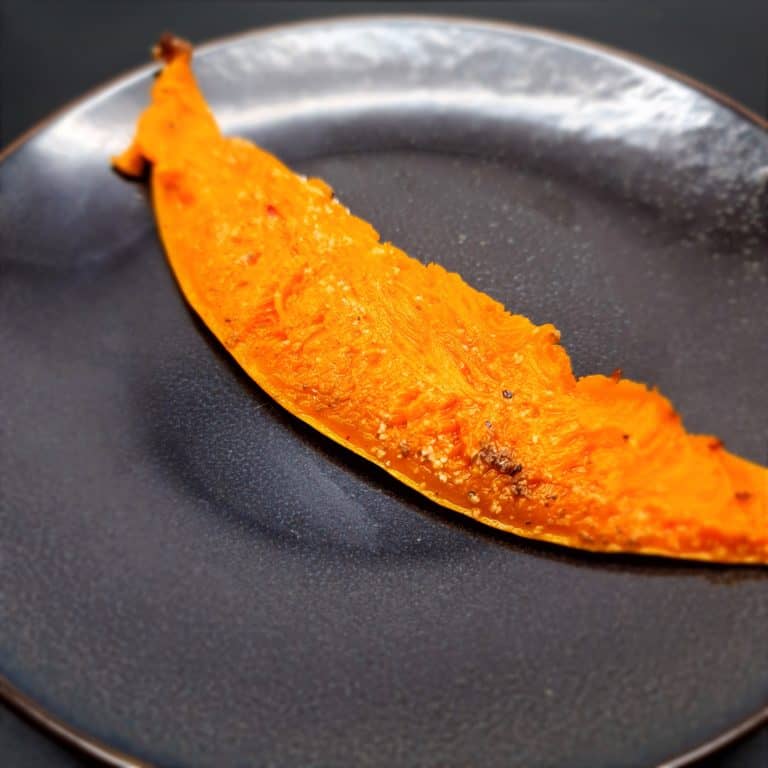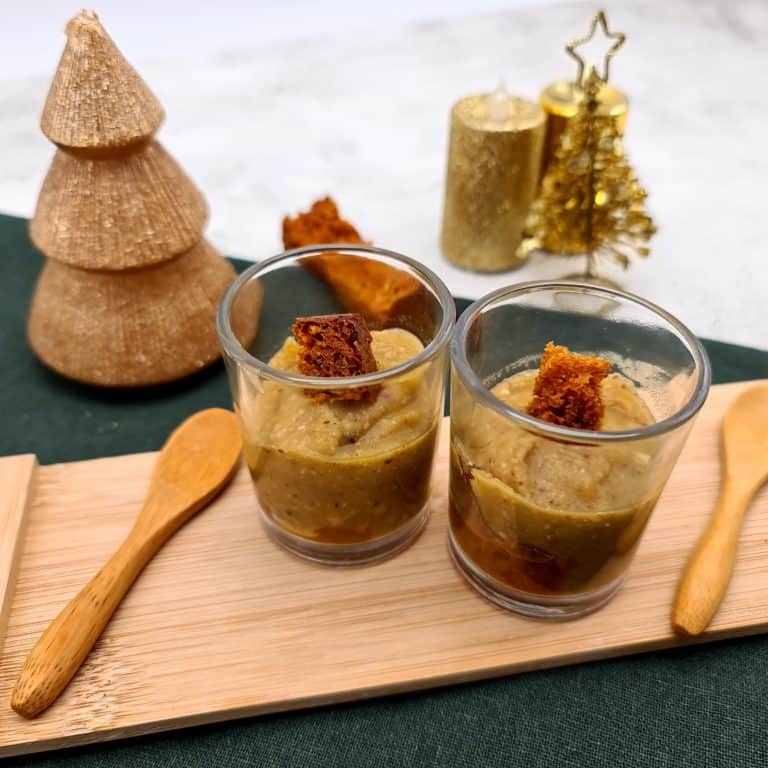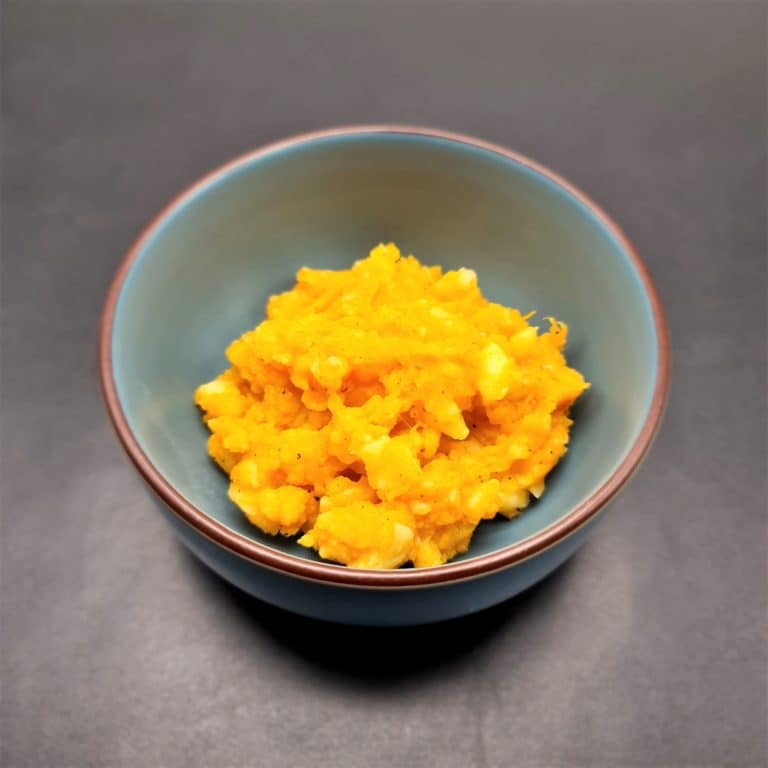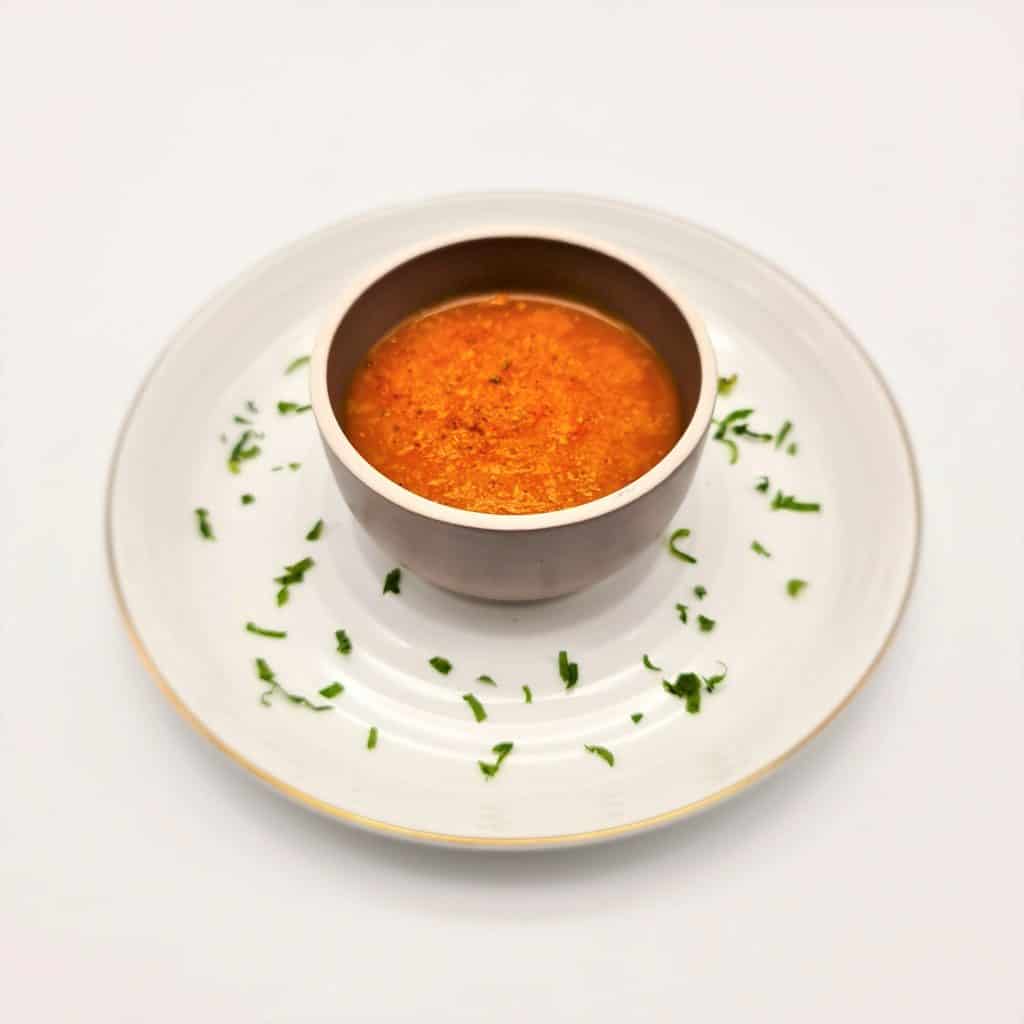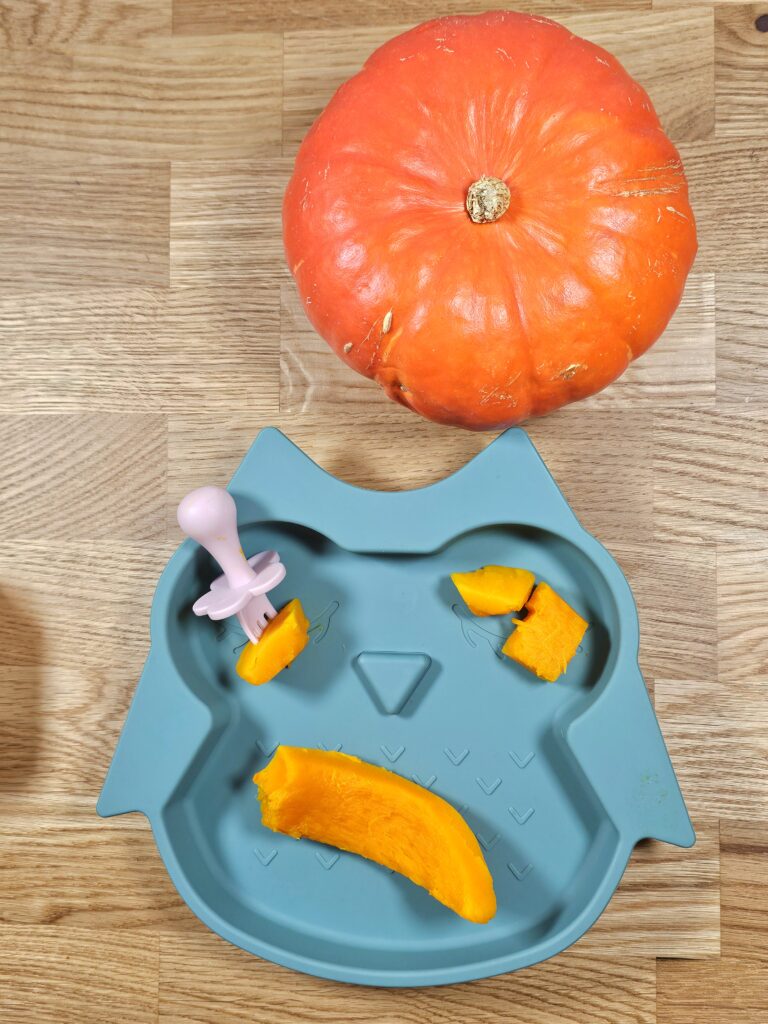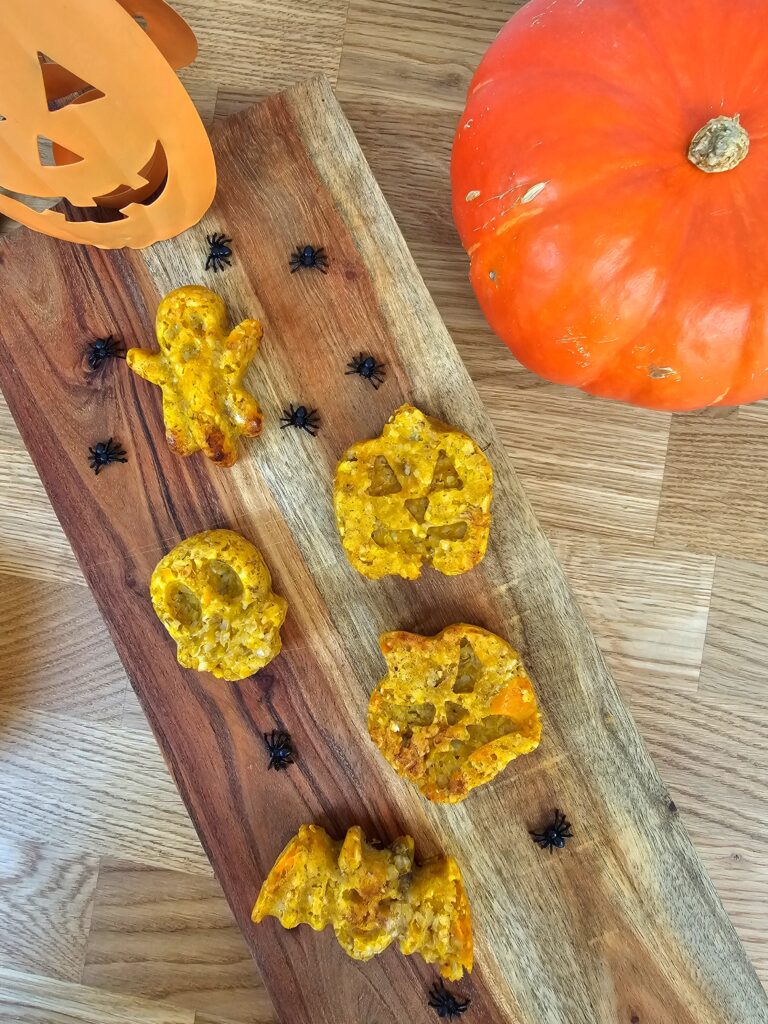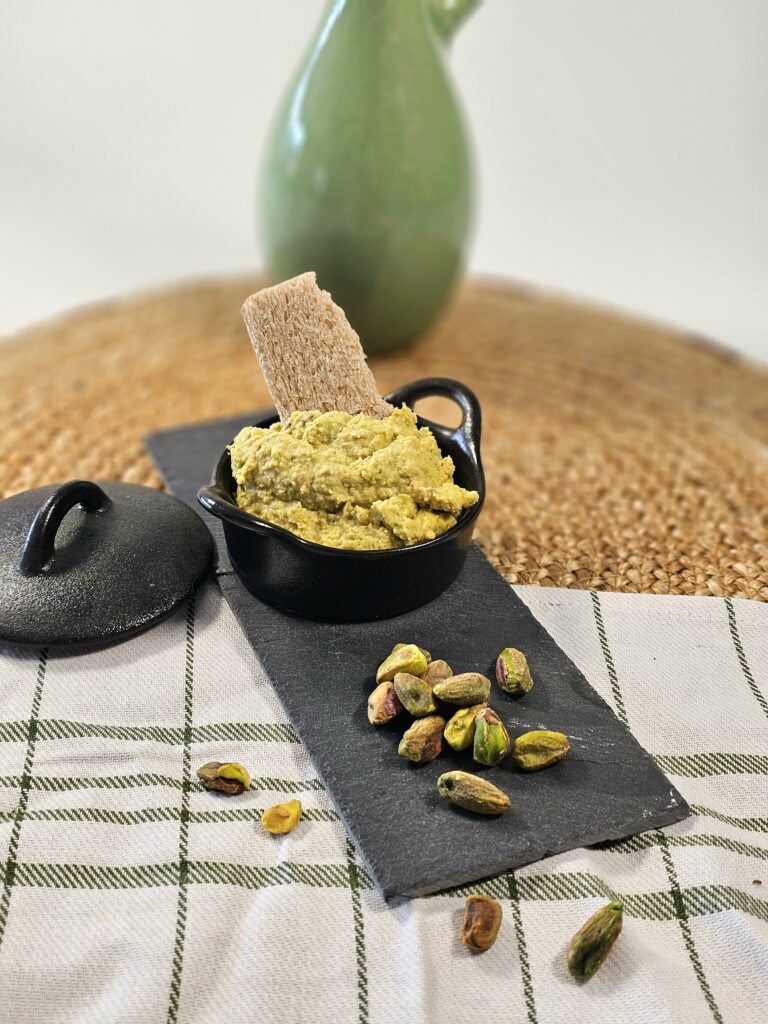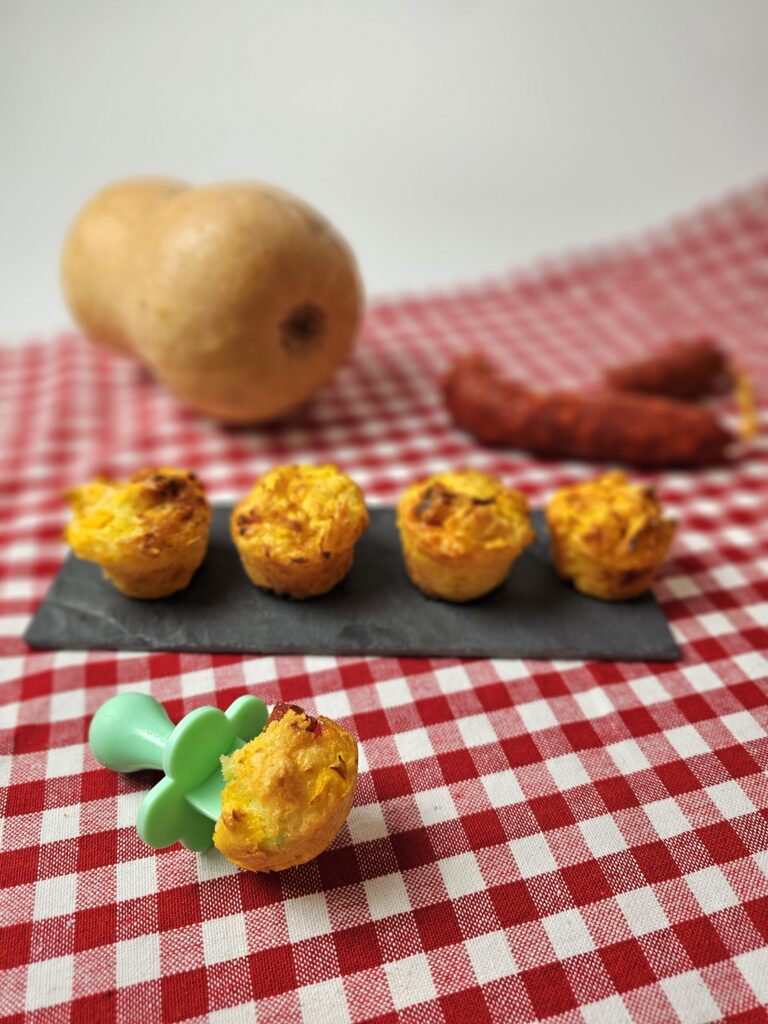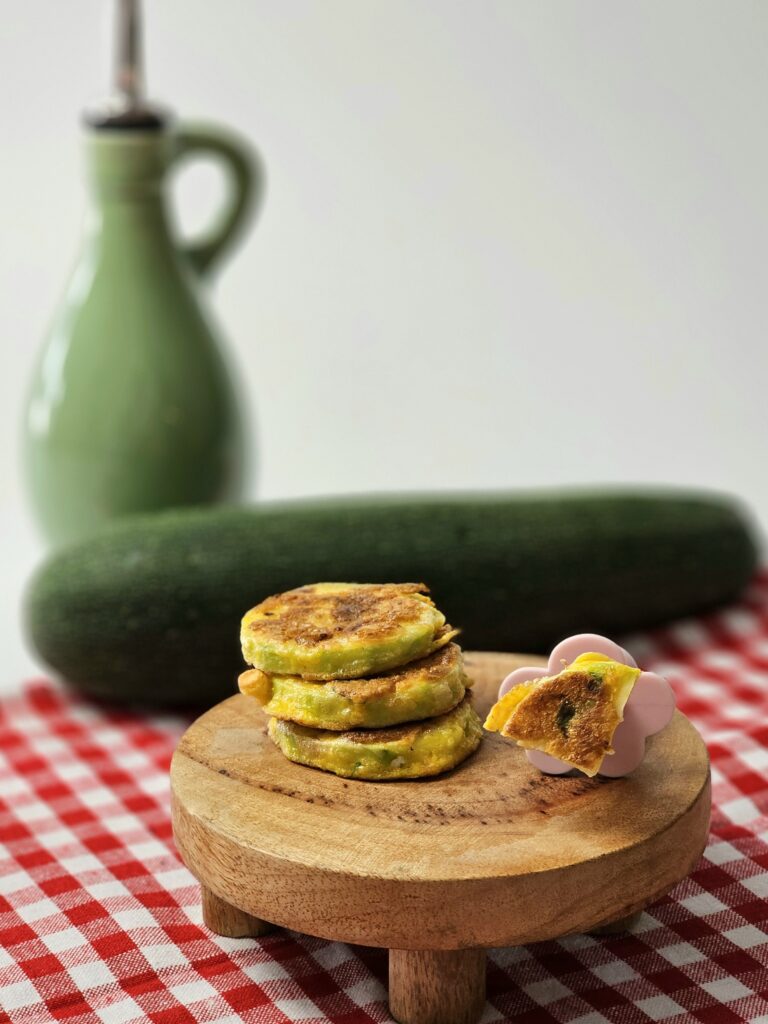Pumpkins are among those vegetables that evoke the gentleness of autumn, colorful meals, and tender new tastes. Their melting texture, slightly sweet flavor, and wide variety make them valuable allies for baby-led weaning ( BLW ).
But how do you introduce pumpkins to your baby in a safe, delicious, and developmentally appropriate way? Follow this guide.
🌱 The nutritional benefits of squash for babies
Pumpkins are a true powerhouse of sweetness and essential nutrients for toddlers. They contain a high amount of beta-carotene (provitamin A) , essential for a baby's vision and skin, as well as vitamins C and E which support their immune system.
They are also rich in gentle fiber , ideal for smooth digestion, and their tender texture makes them easy to digest from the start of weaning. Low in calories, naturally sweet, and hydrating, squash allows babies to discover new flavors gently.
Their bright color and slightly sweet taste often attract babies: a real treat to stimulate curiosity and the pleasure of eating!
🍠 First discoveries: how to introduce squash from 6 months
At the beginning of baby-led weaning, it is recommended to offer foods in soft, easy-to-grasp pieces .
(See our article on "Safe Formats for Baby" )
The goal is not for baby to eat a lot, but for them to discover, explore, and practice chewing.
From 6 months onwards , pumpkin , butternut squash or courgette can be offered:
In steamed sticks , long enough to be grasped with the hand (about the size of two adult fingers).
Cut into zucchini rounds without the skin and with the center removed, to create a small ring that is easy to handle.
In melting cubes , to dip in a spread or sprinkled with aromatic herbs to awaken the taste.
The important thing is to cook the pieces until they are very tender , so that the baby can easily crush them between the tongue and the palate.
💡 Tip: This recipe for curried zucchini fries is perfect for a gentle start to BLW !
🥄 Pumpkins in the form of puree
Contrary to popular belief, BLW does not exclude purees . In fact, it's an excellent way to vary textures . Pumpkin purees are smooth, slightly sweet, and very well tolerated from the first months of weaning.
You can :
Offer them with a pre-filled spoon that the baby can put in their mouth themselves.
them out on a carrier (like a wrap, a blini or a flower loaf) to encourage fine motor skills.
Suitable for testing from 6 months:
Simple, smooth and melt-in-your-mouth pumpkin puree .
Pumpkin puree verrines with chestnuts , BLW Christmas meal .
👉 These purees are a true invitation to explore taste, texture and color.
🧈 Pumpkin-based spreads: a new texture to explore
Spreads are another fun way to introduce squash to babies. Thicker than soup but softer than purée, they lend themselves to all sorts of exploration.
They can be spread on crackers, patties, wraps, or pieces of soft bread , depending on your baby's abilities.
Some ideas:
Butternut squash spread with sweet cumin.
Mashed butternut squash with a little rapeseed oil and fresh coriander.
Courgette cream with fresh cheese and basil.
These more “foamy” textures invite baby to discover new sensations while working on hand-mouth coordination.
🍲 Pumpkin soups: sweet and comforting
When the days get cooler, soup becomes a reliable choice. It's also a great opportunity to introduce baby to a thinner texture .
Once baby is comfortable using a spoon or cup, you can offer:
A slightly sweet and tangy pumpkin-carrot-orange soup
A smooth, warm and soothing butternut squash soup
Start with a pre-filled spoon to allow him to participate, then let him drink from a small cup when he is ready.
🧁 Incorporate squash into everyday recipes
After the initial discovery phase, squashes become the stars of many family recipes. Their soft texture and delicate flavor make them perfect ingredients for:
Naturally sweetened pancakes or muffins
Savory, melt-in-your-mouth and balanced pumpkin flans .
Easy-to-grasp and chewable pumpkin gnocchi .
Vegetable patties for family meals.
The idea is to regularly introduce squash in various forms , to maintain the baby's food curiosity and avoid refusals due to monotony.
🌿 Practical tips for successful BLW with squash
Always cook squash by gentle steaming or in the oven to preserve their flavor and prevent them from becoming watery.
Let them cool down before serving them, to avoid any burns.
Vary the seasonings : a little sweet paprika, curry, nutmeg or cinnamon helps to develop baby's palate.
Avoid added salt and sugar , which are unnecessary for toddlers.
💡 Remember to cook your squash in advance: they keep very well for a few days in the refrigerator or freezer, ready to be incorporated into meals during the week.
🎃 An autumn vegetable to share with the family
Pumpkins are much more than just an autumn vegetable. They are a gateway to discovering taste, color, and the joy of eating together . Thanks to their mildness, versatility, and numerous health benefits, they are a wonderful accompaniment to baby's first steps towards independent eating.
So, whether in melting sticks, puree, soup or muffin, offering squash to baby is offering them the best of the season… and a little sunshine on their plate.
